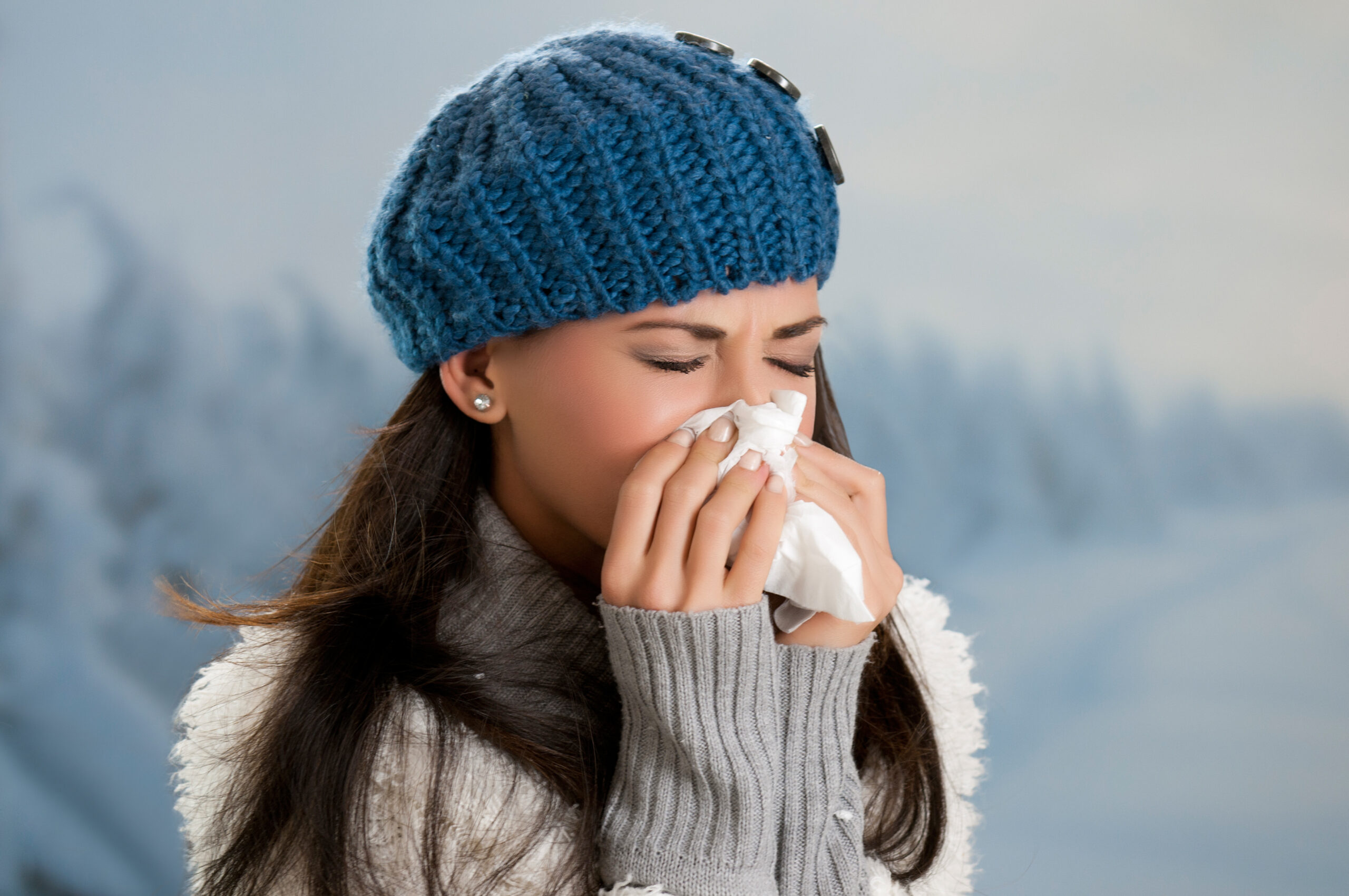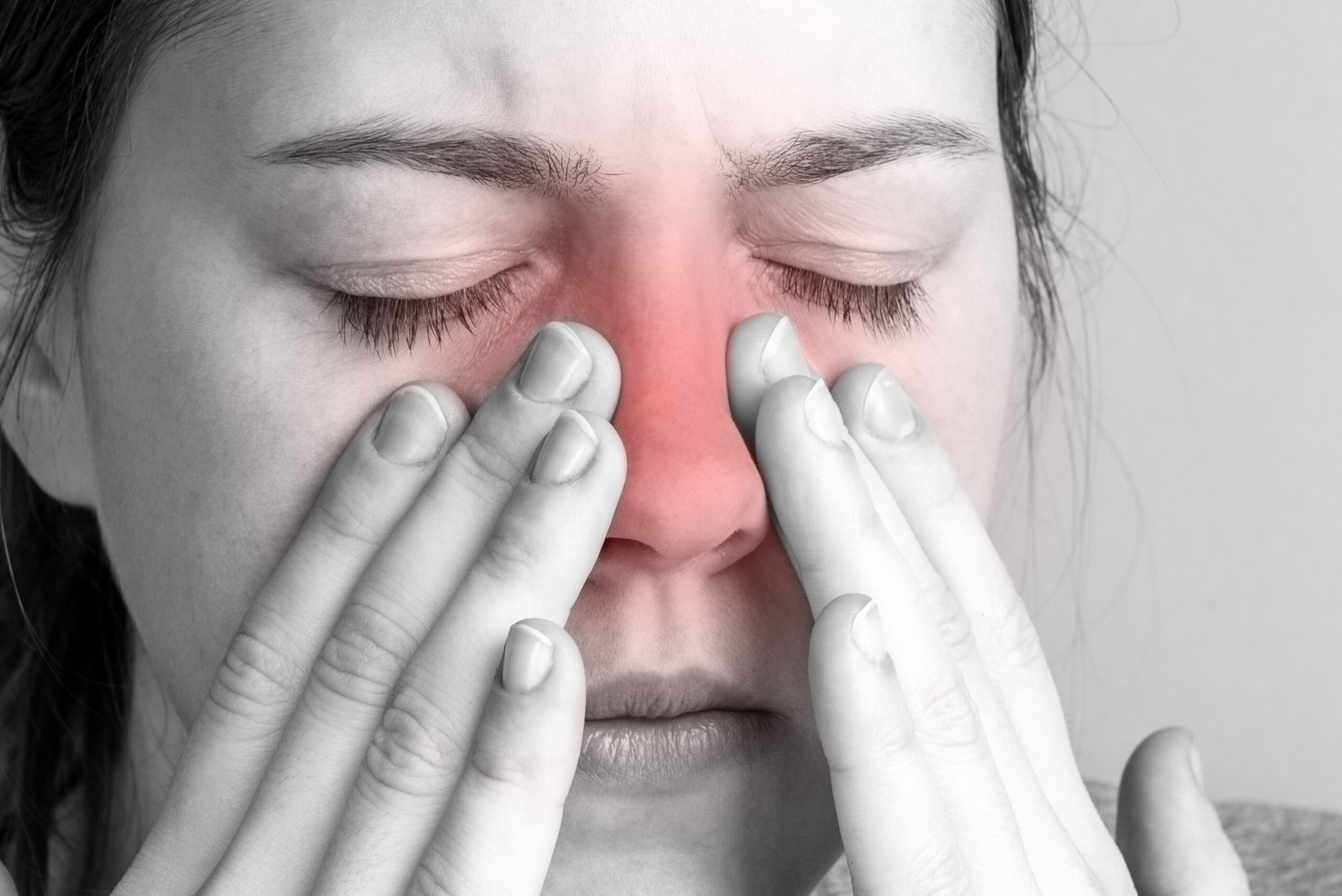LipoNasal® Nasenpflege is intended to moisturise and care for the mucous membranes in dry and blocked noses and as a supportive treatment in case of inflammation of the nasal mucous membranes (such as rhinosinusitis) and congestion of secretions in nose and sinuses.
To ensure the best possible tolerability, the product does not contain any preservatives.
Topics around LipoNasal®

Background
Every day, about 12,000 litres of inhaled air pass through the nose of an adult, which means that the mucous membranes inevitably meet many dust particles, bacteria and viruses or allergens.
The nasal mucosa is equipped with an effective self-cleaning and defence system. This allows her to moisten and clean the air for the lower respiratory tract and to protect herself from the inhaled influences:

The so-called “mucociliary clearance” plays a key role in cleansing and defence of the nasal mucosa:
On the surface of the mucous membranes are tiny cilia that beat continuously.
The cilia are normally environed by a multi-layered film of moisture, to which most of the inhaled particles and germs adhere. The constant movement of the cilia enables the removal of inhaled particles, allergens, dust, and pathogens from the nose. We could say that the cilia are the mechanic force, while the moisture film works as "conveyor belt".
The natural self-cleansing and defence system can work properly only if the outer surfactant film is intact. Otherwise, the underlying moisture film will tear open, leaving the mucous membranes unprotected and interrupting the mucociliary clearance. In this case the removal of inhaled particles will no longer take place.
The outer surfactant film, which is mainly formed from phospholipids, plays an important role in protecting the nasal mucosa.
The surfactant film ensures that:
- the moisture film remains stable and does not tear open
- mucociliary clearance is improved and accelerated
- inhaled particles, allergens and pathogens are absorbed into the moisture film and removed

How LipoNasal® works
LipoNasal® moisturises the mucous membrane and adds phospholipid liposomes to the natural moisturising film. By adding phospholipids, the surfactant (and thus the entire moisturising film) can be stabilised and restored so that the natural self-cleansing and defence system can fulfil its tasks once again
Glowania A., Mösges R. , Böhm M., Knopf A., Klimek L.
The surfactant system – a new approach for treating the upper respiratory tract mucosa.
Atemwegs- und Lungenkrankheiten 37(10):1-5
Klimek L, Sperl A, Glowania A, Pfaar O.
Das Surfactant-System der oberen Atemwege: Aufbau, Funktion und klinische Bedeutung
Allergo Journal: 21(5): 307-314
Enzel U.
Pflege der Atemwegs-Schleimhäute zur Therapie-Unterstützung.
Forum HNO (24) 2022
Common cold
Acute rhinitis (also known as nasal catarrh or common cold) is a sudden inflammation of the nasal mucosa, usually caused by a viral infection. The common cold often manifests itself with runny nose and sneezing. Later, the secretion thickens and blocks nose and sinuses, until unhindered nasal breathing is no longer possible. The symptoms usually last for one to two weeks.
The most common symptoms of a cold (acute rhinitis) are:
- runny nose (rhinorrhoea)
- sneezing
- stuffy nose (congestion in the nose)
- secretion during the course of the cold (often yellowish-green in colour)
- nasal voice

The main cause of acute rhinitis is viral infection, especially by rhinoviruses or adenoviruses, which are easily transmitted through the air or by simple contact. Other diseases are often involved, which can be both a cause and a consequence of the rhinitis, for example acute bronchitis, sinusitis or tubal-middle ear catarrh.
Attention:
Decongestants such as xylometazoline, oxymetazoline or tramazoline indeed reduce swelling, but they dry out the nasal mucosa and carry the risk of addiction.
They should be used for a maximum of seven days due to the risk of a rebound phenomenon.
LipoNasal® stabilises the natural moisture film that protects the nasal mucous membranes from pathogens (viruses, bacteria, and fungi). This supports the natural self-cleaning and defence system of the respiratory tract. The nasal spray contains no preservatives and relieves the symptoms.
Allergy/hay fever
More than 20% of the population suffers from allergic rhinitis. It is one of the most common chronic diseases of all and the incidence continues to increase.
Allergic rhinitis occurs when the immune system becomes sensitised to a harmless substance, a so-called allergen, and overreacts. People suffering from allergic rhinitis may experience the first symptoms immediately after inhaling an allergen:
- Sneezing attacks / sneezing fits
- Itching
- Runny nose, later the nasal mucosa becomes dry
- Clear and watery secretion
- Nasal congestion

Accompanying symptoms often include watery and itchy eyes and redness of the conjunctiva, as well as itching of the palate or throat and even the ears.
In case of hay fever (seasonal rhinitis, pollen allergy), symptoms occur particularly frequently during the tree blossom and the grass and grain blossom.
In addition, a year-round allergic rhinitis (perennial rhinitis) can be caused by house dust mites, mould spores or mattress fillers.
Lastly, allergic rhinitis can also be caused by animal hair or allergens occurring predominantly in certain occupational environments (for example flour, latex, etc.).
Nasal spray for allergy - Attention:
Cortisone nasal sprays are often used for allergic rhinitis. However, their use during pregnancy requires a strict risk-benefit assessment because animal studies have found indications of malformations (such as cleft palate and skeletal abnormalities).
LipoNasal® moisturises and supports the natural self-cleaning and defence system of the nasal mucosa.
LipoNasal® is a nasal spray without cortisone. It has proven its worth as a treatment option for allergy-related complaints:
- Substantial reduction of symptoms
- Significant improvement in the quality of life
- Good tolerance without side effects
- Immediate full effect from the first spray application
LipoNasal® nasal spray can be used by children and adults. Also, during pregnancy.

References:
Weston LA, Mösges R.
Behandlung der saisonalen allergischen Rhinokonjunktivitis mit einem liposomalen Nasenspray.
Allergologie 2010; 33: 196-204.
Böhm M, Avgitidou G, El Hassan E et al.
Liposomes: a new non-pharmacological therapy concept for seasonal-allergic-rhinoconjunctivitis.
Eur Arch Otorhinolaryngol 269, 495–502 (2012).
Inflamed sinuses (Sinusitis)
Sinusitis is an inflammatory change in the mucous membranes in the sinuses.
Inflammation of the nasal mucous membranes (e.g. due to infection or allergy) makes the mucous membranes swell and causes increased secretion. Therefore, the openings (ostia) which form the connecting channels between the nasal cavity and the sinuses are closed.
Defence and self-cleansing systems no longer operate properly. A congestion made of secretions occurs in the sinuses. Pathogens can spread and the mucous membranes of the sinuses get inflamed.

When the mucous membrane of the nose (rhinitis) and the mucous membrane of the paranasal sinuses (sinusitis) are both inflamed, this is called rhinosinusitis.
The typical symptoms of sinusitis are:
- Facial pain and headache (symptoms usually worsen when bending over).
- Rhinitis with purulent secretion (yellowish green)
- Impaired nasal breathing
- Impaired sense of smell
- Fatigue, tiredness, and reduced efficiency
Accompanying symptoms can be clearing of the throat, hoarseness and coughing, caused by a flow of secretion in the throat that runs down into the bronchial tubes, especially at night when lying down (post-nasal drip).
In acute sinusitis, the symptoms typically last about 2 weeks. Chronic sinusitis is when the symptoms occur more than four times a year or last longer than 12 weeks.
LipoNasal® stabilises the natural moisture film, supporting the natural self-cleaning and defence system of the airways.
LipoNasal® is a cortisone-free nasal spray that has proven its worth as a treatment option for these symptoms:
- Significant reduction of symptoms
- Significant improvement in the quality of life
- Good tolerance without side effects
References:
A. Eitenmüller, L. Piano, M. Böhm, K. Shah-Hosseini, A. Glowania, L. Klimek und R. Mösges.
Verträglichkeit und Auswirkungen auf die Lebensqualität durch die Behandlung mit einem liposomalen Nasenspray bei Patienten mit chronischer Rhinosinusitis.
Allergologie 2012; 35: 17-24.
Eitenmüller A, Piano L, Böhm M, Shah-Hosseini K, Glowania A, Pfaar O, Mösges R, Klimek L.
Liposomal Nasal Spray versus Guideline-Recommended Steroid Nasal Spray in Patients with Chronic Rhinosinusitis: A Comparison of Tolerability and Quality of Life.
J Allergy (Cairo). 2014;2014:146280.
Dry nose (rhinitis sicca)
Although many people suffer from it, there is still no generally accepted definition for the disease "dry nose".
The clinical picture is characterised by dry mucous membranes and their encrustation.
Typical symptoms and signs:
- Feeling of dryness
- Itching and slight burning
- Impaired nasal breathing
- Crusting, scabbing and bark formation
- Nosebleeds
The causes of the disease pattern can be manifold. Symptoms can occur as a manifestation of other diseases (e.g. Sjögren's syndrome), as a consequence of radiation therapy in head and neck region or operations on the nose and/or sinuses. Symptoms could also be as a side effect of medication or occur because of drug use (cocaine), either temporarily or permanently.
Long-term oxygen therapy (LOT) is a treatment for people with oxygen deficiency, such as patients with COPD and emphysema. By this the permanent administration of oxygen for at least 16 hours a day is meant.
High flow rates in nasal administration (e.g. via oxygen / nasal cannulae) inevitably lead to the nasal mucous membranes drying out.
CPAP ventilation is similar. CPAP is the abbreviation of "continuous positive airway pressure" and stands for a form of ventilation with positive pressure, which is used e.g. in the therapy of sleep apnoea.
LipoNasal® moisturises and stabilises the natural moisturising film and has been well proven to relieve the symptoms of dry nasal mucous membranes.
LipoNasal® is also suitable for patients on oxygen therapy.
References:
Hahn C, Böhm M, Allekotte S. et al.
Tolerability and effects on quality of life of liposomal nasal spray treatment compared to nasal ointment containing dexpanthenol or isotonic NaCl spray in patients with rhinitis sicca.
Eur Arch Otorhinolaryngol 270, 2465–2472 (2013).
Hofauer B, Bas M, Manour N et al.
Liposomal local therapy as treatment for sicca symptoms in patients with primary Sjögren’s syndrome.
HNO 61, 921–927 (2013).
Smell (olfactory) disorders
A disturbed sense of smell can have many different reasons:
In sinunasal olfactory disorders, the inhaled air is obstructed on its way to the olfactory mucosa, so that the odorous substances cannot trigger any olfactory perception. Causes include anatomical peculiarities (e.g. nasal polyps, curvature of the nasal septum) or hormonal changes.
Non-sinunasal olfactory disorders, on the other hand, are caused by damage to the olfactory apparatus itself. Possible triggers can be:
- Viral infections of the upper respiratory tract (e.g. Corona infection)
- Trauma (e.g. skull injuries)
- Cancer radiation therapy
- Other underlying diseases (such as Alzheimer's dementia, Parkinson's disease, multiple sclerosis, type 2 diabetes, depression)
- Side effects of medicines (e.g. chemotherapeutics, antihypertensives, painkillers, antibiotics)
- Acute or chronic toxic damage to the olfactory mucosa, for example through formaldehyde, tobacco smoke, pesticides, carbon monoxide (CO) or cocaine
In a clinical study the treatment with LipoNasal® resulted in a significant improvement in existing olfactory disorders after chemotherapy and radiotherapy.

References:
Heiser C, Hofauer B, Scherer E, Schukraft J, Knopf A.
Liposomal treatment of xerostomia, odor, and taste abnormalities in patients with head and neck cancer.
Head Neck. 2016 Apr;38 Suppl 1:E1232-7.




